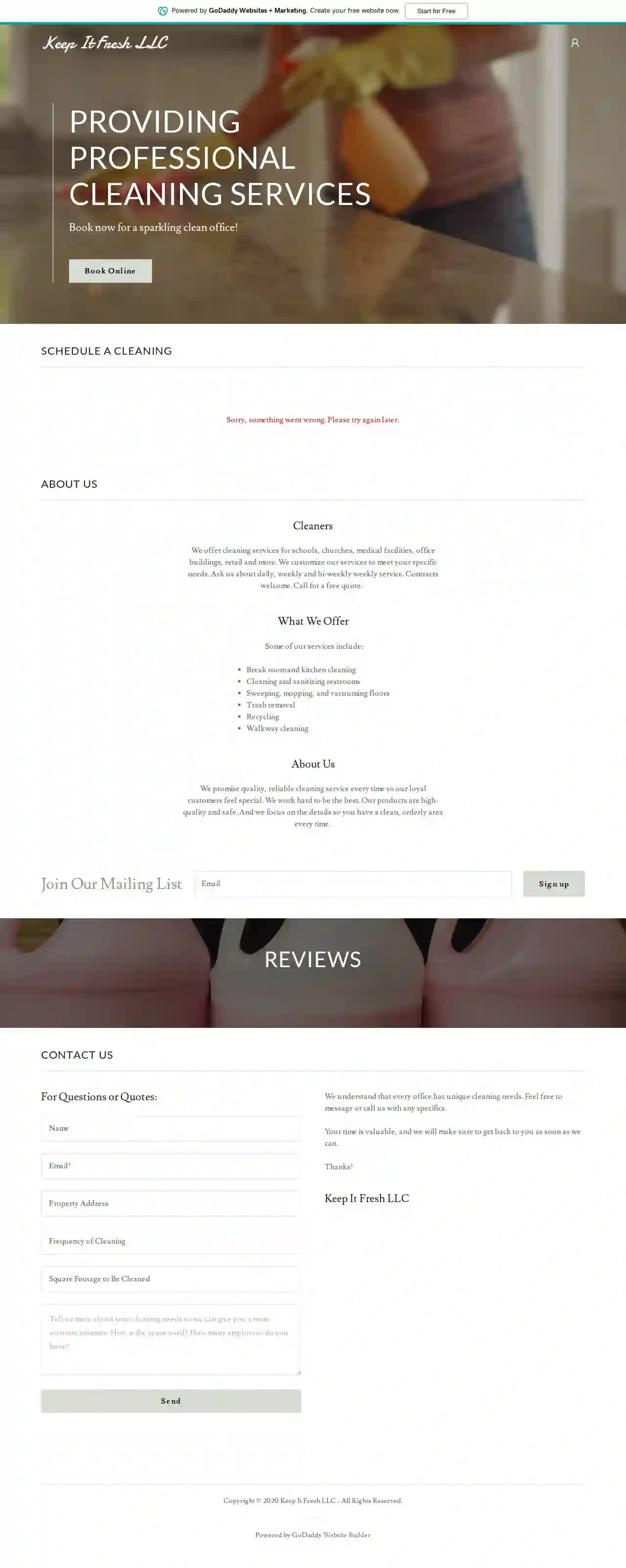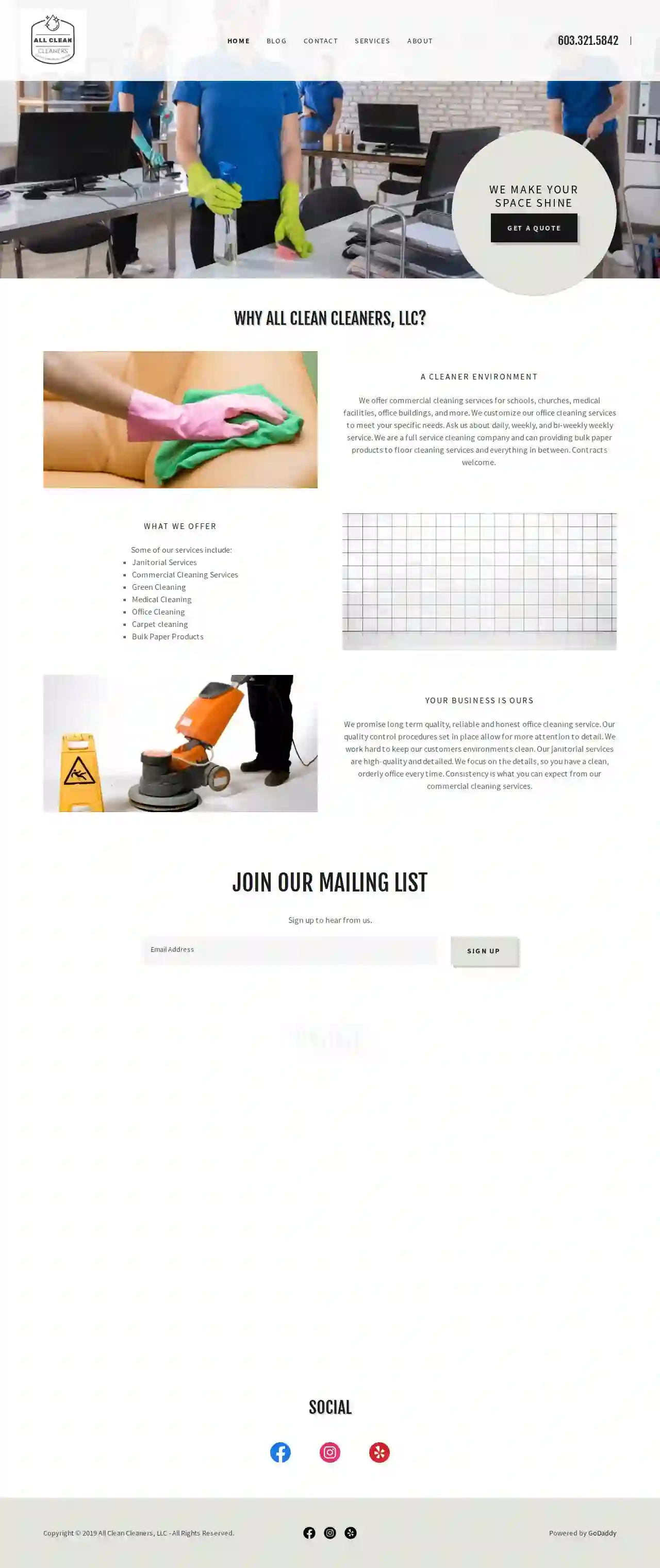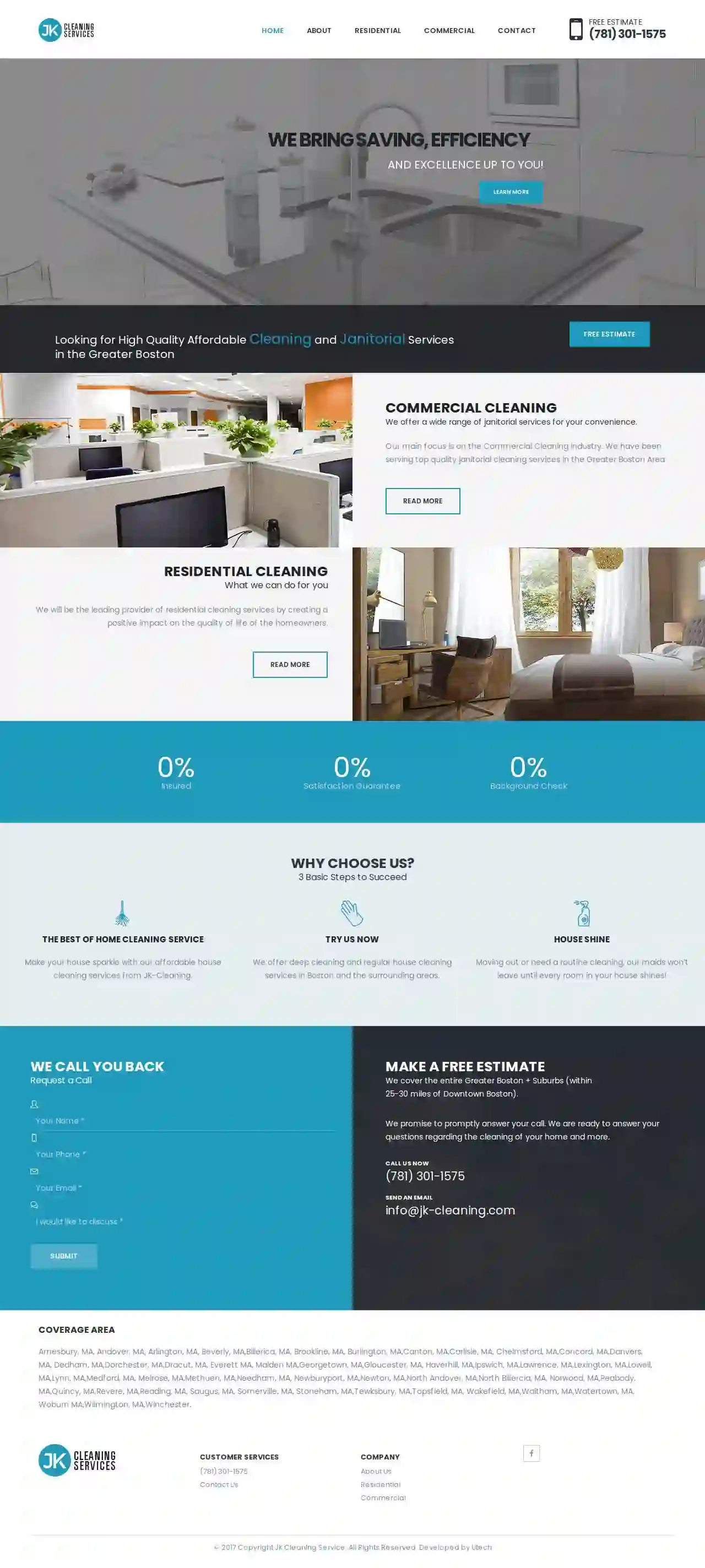Cleaning Services Sandown
Best Cleaning in Sandown
Receive multiple Local Cleaners quotes for your project today! Compare profiles, reviews, accreditations, portfolio, etc... and choose the best offer.
Service Needed
City or Town

Calden Commercial Cleaning
52 reviewsNashua, US- Services
- Why Us?
Get Quote
Office Pride Commercial Cleaning Services of Nashua-Lowell
54 reviewsNashua, US- Services
- Why Us?
Get Quote
Keep It Fresh LLC
53 reviewsNashua, US- Services
- Why Us?
Get Quote
G.H. Painting and Cleaning LLC.
527 reviewsNashua, US- Services
- Why Us?
Get Quote
All Clean Cleaners, LLC
59 reviewsNashua, US- Services
- Why Us?
Get Quote
Jk-commercial cleaning
4.84 reviewsNashua, US- Services
- Why Us?
Get Quote
Trusted Cleaning Service
559 reviewsNashua, US- Services
- Why Us?
Get Quote
TopWorks Cleaning LLC
57 reviewsNashua, US- Services
- Why Us?
Get Quote
QUALITY CLEANING SERVICES
55 reviewsNashua, US- Services
- Why Us?
Get Quote
Carick house and office cleaning LLC
530 reviewsNashua, US- Services
- Why Us?
Get Quote
Over 60,241+ Cleaning Contractors registered
Our janitorial services operate in Sandown & surrounding areas!
CleaningMatch has curated and vetted the Best Cleaning Contractors in and around Sandown. Find a top & reliable business today.
Frequently Asked Questions About Cleaning Services
Find answers to common questions about cleaning services and hiring cleaning companies in the USA.
- Experience and a proven track record: Choose companies with a solid history of providing quality cleaning services.
- Positive customer reviews and testimonials: Check online reviews and ratings to gauge customer satisfaction.
- Licensed and insured professionals: Ensure the company has the necessary licenses and insurance to protect you from liability.
- Clear and transparent pricing: Obtain detailed quotes and compare prices from multiple companies.
- Good communication and responsiveness: Choose a company that communicates clearly, responds promptly, and addresses your concerns.
- Dishes: Load the dishwasher or wash dishes by hand.
- Sink: Clean the sink with a sponge or cloth and dish soap. Pay attention to the faucet and drain. You can also use a baking soda paste to remove stubborn stains.
- Countertops: Wipe down countertops with a disinfectant cleaner or all-purpose cleaner.
- Stovetop: Clean the stovetop with a degreaser or stovetop cleaner. Remove burner grates and wash them separately if needed.
- Oven: Clean the oven according to the manufacturer's instructions. You can use a self-cleaning function or a commercial oven cleaner.
- Microwave: Clean the microwave interior with a damp cloth or sponge. For stuck-on food, heat a bowl of water with lemon juice in the microwave for a few minutes to loosen debris.
- Refrigerator: Wipe down the refrigerator shelves and drawers with a damp cloth or sponge. Remove any expired food and clean spills promptly.
- Floors: Sweep or vacuum the floor, then mop with a floor cleaner suitable for your kitchen floor type.
- Trash: Empty the trash can and recycling bin.
- Frees up your time: Cleaning can be time-consuming, especially for larger properties or busy individuals. Hiring a cleaning service allows you to focus on other priorities, such as work, family, or leisure activities.
- Ensures a deeper clean: Professional cleaners are trained in effective cleaning techniques and have access to specialized equipment, resulting in a more thorough clean than you might achieve on your own.
- Reduces allergens and improves hygiene: Thorough cleaning removes dust, allergens, and germs, creating a healthier living environment, particularly for those with allergies or sensitivities.
- Reduces stress and improves well-being: Coming home to a clean and tidy home can reduce stress and promote a sense of calm and order.
- Residential Cleaning: Covers cleaning homes, apartments, and other living spaces.
- Commercial Cleaning: Focuses on cleaning offices, retail stores, and other business establishments.
- Deep Cleaning: A thorough and intensive cleaning that covers areas often neglected during regular cleaning.
- Move-In/Move-Out Cleaning: Comprehensive cleaning performed before or after moving into or out of a property.
- Post-Construction Cleaning: Specialized cleaning after construction or renovation projects to remove debris and dust.
- Specialized Cleaning: Includes services like carpet cleaning, window cleaning, upholstery cleaning, and more.
How do I find a good cleaning service?
Finding a reputable cleaning service requires research and due diligence. Look for companies with:
Utilize online directories like CleaningMatch to find and compare qualified cleaning services in your area.
Utilize online directories like CleaningMatch to find and compare qualified cleaning services in your area.
What is the most efficient way to clean a kitchen?
A clean kitchen is essential for food safety and a pleasant cooking experience. Here's an efficient kitchen cleaning process:
Regularly cleaning your kitchen helps maintain a hygienic and organized space for cooking and dining.
Regularly cleaning your kitchen helps maintain a hygienic and organized space for cooking and dining.
Are cleaning services worth it?
The value of a cleaning service depends on your individual circumstances and priorities. Consider these benefits:
If you value these benefits and find the cost justifiable, cleaning services can be a worthwhile investment in your time and well-being.
If you value these benefits and find the cost justifiable, cleaning services can be a worthwhile investment in your time and well-being.
What are the different types of cleaning services?
Cleaning services cater to diverse needs and offer a range of options, including:
The best type of cleaning service depends on your specific needs, the size and condition of the property, and your budget.
The best type of cleaning service depends on your specific needs, the size and condition of the property, and your budget.
How do I find a good cleaning service?
Finding a reputable cleaning service requires research and due diligence. Look for companies with:
Utilize online directories like CleaningMatch to find and compare qualified cleaning services in your area.
- Experience and a proven track record: Choose companies with a solid history of providing quality cleaning services.
- Positive customer reviews and testimonials: Check online reviews and ratings to gauge customer satisfaction.
- Licensed and insured professionals: Ensure the company has the necessary licenses and insurance to protect you from liability.
- Clear and transparent pricing: Obtain detailed quotes and compare prices from multiple companies.
- Good communication and responsiveness: Choose a company that communicates clearly, responds promptly, and addresses your concerns.
Utilize online directories like CleaningMatch to find and compare qualified cleaning services in your area.
What is the most efficient way to clean a kitchen?
A clean kitchen is essential for food safety and a pleasant cooking experience. Here's an efficient kitchen cleaning process:
Regularly cleaning your kitchen helps maintain a hygienic and organized space for cooking and dining.
- Dishes: Load the dishwasher or wash dishes by hand.
- Sink: Clean the sink with a sponge or cloth and dish soap. Pay attention to the faucet and drain. You can also use a baking soda paste to remove stubborn stains.
- Countertops: Wipe down countertops with a disinfectant cleaner or all-purpose cleaner.
- Stovetop: Clean the stovetop with a degreaser or stovetop cleaner. Remove burner grates and wash them separately if needed.
- Oven: Clean the oven according to the manufacturer's instructions. You can use a self-cleaning function or a commercial oven cleaner.
- Microwave: Clean the microwave interior with a damp cloth or sponge. For stuck-on food, heat a bowl of water with lemon juice in the microwave for a few minutes to loosen debris.
- Refrigerator: Wipe down the refrigerator shelves and drawers with a damp cloth or sponge. Remove any expired food and clean spills promptly.
- Floors: Sweep or vacuum the floor, then mop with a floor cleaner suitable for your kitchen floor type.
- Trash: Empty the trash can and recycling bin.
Regularly cleaning your kitchen helps maintain a hygienic and organized space for cooking and dining.
Are cleaning services worth it?
The value of a cleaning service depends on your individual circumstances and priorities. Consider these benefits:
If you value these benefits and find the cost justifiable, cleaning services can be a worthwhile investment in your time and well-being.
- Frees up your time: Cleaning can be time-consuming, especially for larger properties or busy individuals. Hiring a cleaning service allows you to focus on other priorities, such as work, family, or leisure activities.
- Ensures a deeper clean: Professional cleaners are trained in effective cleaning techniques and have access to specialized equipment, resulting in a more thorough clean than you might achieve on your own.
- Reduces allergens and improves hygiene: Thorough cleaning removes dust, allergens, and germs, creating a healthier living environment, particularly for those with allergies or sensitivities.
- Reduces stress and improves well-being: Coming home to a clean and tidy home can reduce stress and promote a sense of calm and order.
If you value these benefits and find the cost justifiable, cleaning services can be a worthwhile investment in your time and well-being.
What are the different types of cleaning services?
Cleaning services cater to diverse needs and offer a range of options, including:
The best type of cleaning service depends on your specific needs, the size and condition of the property, and your budget.
- Residential Cleaning: Covers cleaning homes, apartments, and other living spaces.
- Commercial Cleaning: Focuses on cleaning offices, retail stores, and other business establishments.
- Deep Cleaning: A thorough and intensive cleaning that covers areas often neglected during regular cleaning.
- Move-In/Move-Out Cleaning: Comprehensive cleaning performed before or after moving into or out of a property.
- Post-Construction Cleaning: Specialized cleaning after construction or renovation projects to remove debris and dust.
- Specialized Cleaning: Includes services like carpet cleaning, window cleaning, upholstery cleaning, and more.
The best type of cleaning service depends on your specific needs, the size and condition of the property, and your budget.